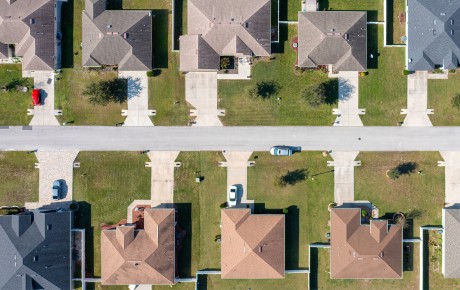
Risk Rating 2.0: unexpected consequences?
Since 1 April 2022, the US government backed National Flood Insurance Programme (NFIP) has been rolling out its new rating methodology – Risk Rating 2.0 – for the renewal of homeowner flood insurance policies. As the second phase of the rollout, after the introduction of the risk rating for new business from 1 October 2021, it’s at last a chance to see what the real-world impact is on both policyholders and the wider flood insurance market in the US.
According to Hiscox London Market’s Tom King – Flood Underwriter, the first signs are perhaps not as anticipated: “The expectation was that Risk Rating 2.0 would provide a rare opportunity for the private flood market to capitalise on the changes and the dislocation caused by the largest change to the government backed programme since the Affordability Act of 2014.” The reality is not quite as simple he adds. “Initial findings have seen some properties in the most flood exposed regions enjoy premium reductions on their NFIP policies.”
Despite this somewhat counter-intuitive consequence, King says: “It’s not necessarily a bad result for the private flood market which has more room to underwrite excess flood opportunities for those NFIP policyholders in the most flood exposed areas, as well as focusing on more inland areas where NFIP prices have seen increases.”
“It’s not necessarily a bad result for the private flood market which has more room to underwrite excess flood opportunities for those NFIP policyholders in the most flood exposed areas" says King.
Surprising NFIP rate cuts
Risk Rating 2.0 is the latest attempt to address years of losses under the federal flood insurance scheme which led to a reported cumulative debt of over US$20 billion in 2021. The idea behind the new rating is to align the NFIP’s rating methodology more closely with the private insurance market. The result should be to ensure policyholders pay a more appropriate, risk adjusted premium for their cover and, in turn, help to reduce the programme’s heavy losses. Prior to implementation, the NFIP estimated that over three quarters of existing policies would see an increase in premium leading to the inevitable conclusion that the private market would increase its market share as policyholders looked for alternative cover. “As the rating changes start to feed through, however, it appears some V zone properties – the most flood exposed regions – have seen their NFIP rates cut, in some instances by as much as a half,” says King.
In addition, the use of individual replacement cost values (RCVs) to rate a property on the correct exposure – another keystone of the Risk Rating 2.0 approach – has not increased NFIP premiums as might have been expected. “Early indications suggest the NFIP’s RCV data doesn’t look to be in line with the rest of the market. Even in states such as California, where median house prices and the costs of re-build are highest, most of the state’s NFIP policies are receiving a reduction,” says King.
"Early indications suggest the NFIP’s RCV data doesn’t look to be in line with the rest of the market." states King.
An ‘excess’ of opportunity
While unexpectedly good news for some homeowners in V zone areas, are these rate reductions bad news for a sustainable and competitive private flood insurance market? “We might have been surprised to see these lower rates in V zone properties given this well rated segment of the market traditionally subsidised other zones for the NFIP,” says King, “but there is still plenty of room for the private market, particularly given the potential to underwrite more excess policies for policyholders who are saving money on their primary NFIP placement but need more cover than that offered by their NFIP limit.”
“Alongside the excess opportunity, there is also room to focus on inland and X zones where the private market can provide a competitive alternative to the NFIP for those homeowners who have flood exposure but have no mandatory purchase requirement,” says King. “As ever, self -insurance is our biggest competitor in these areas, particularly at a time of economic hardship when a potential insured’s all-risk policy is increasing on top of their mortgage and general costs.”
A more competitive flood market
Despite some of the unexpected consequences of Risk Rating 2.0, however, King believes the signs are that the changes will be beneficial both for the NFIP and the private flood market. “The NFIP is today more like a private market than it was a year ago, which ultimately means – despite some pricing outliers – a more competitive flood insurance market. This can only be good news both for the federal purse, but also for the flood insurance market generally and for homeowners who will benefit from a wider choice and more options for effective flood cover,” says King.
"The NFIP is today more like a private market than it was a year ago, which ultimately means – despite some pricing outliers – a more competitive flood insurance market." says King.




